Note to all my readers: I've wrestled with whether or not to publish this post. It was written just BEFORE the horrible attack of July 26th in which Father Jacques Hamel was murdered and one of his parishioners gravely injured by two terrorists acting "in the name of ISIL" during services in the church at Saint-Etienne-du-Rouvray. Then an extraordinary thing happened: On Sunday July 31st, in churches all across France -- including the Cathedral of Notre Dame de l'Assomption in Clermont-Ferrand, just up the hill from the subject of this post -- Muslims joined with Christian congregations to demonstrate solidarity and to express their rejection of terrorists.
As one imam of a mosque in Vichy explained, "By our presence, we want to show that we are wholeheartedly with Catholics but also with Humanity, no matter what their faith [...] Islam is dirtied by people who don't really practice it. I'm angry. To be Muslim is not uniquely to say a prayer, it's a behavior, a respect. We have to act. If we just let them do this, we're complicit in their actions."
The horror of Saint-Etienne-du-Rouvray is not directly attributable to what happened in 1095 C.E. in Clermont-Ferrand... but there is, I think, a historical line that runs between the two events. My hope is that this understanding -- and the interfaith dialogue that started in the wake of this attack -- can be part of the long process of healing and finding solutions. As all of us who love France know, it's urgent for this process to go forward now!
~~~~~~~~~~~~~~~~~~~~~~~~~~~~~
It’s 86 degrees and humid in Clermont-Ferrand today, headed to 90 later this week. Most offices and houses here don’t have air conditioning, so any respite from this oppressive heat is welcome.
For me, one of the best places to be on days like this is inside the ancient basilica of Notre Dame du Port. I leave my office, already hot as a car in a Texas parking lot by lunchtime, and labor up the sharp little street from Place des Carmes to spend an hour in the cool dark interior of this medieval wonder.
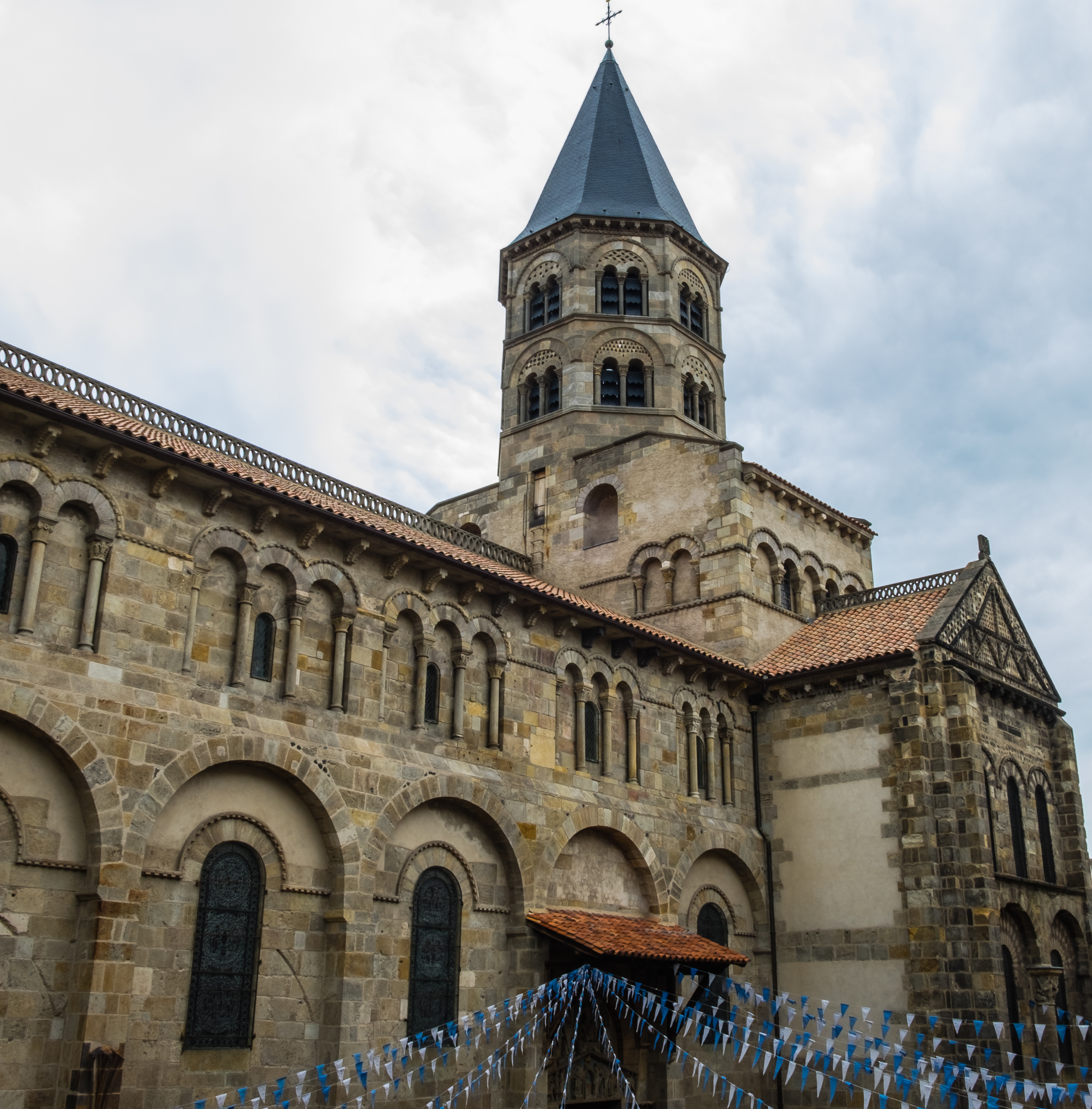
Rebuilt in its current form beginning in 1185 C.E. -- but existing already since the sixth century -- this is Clermont-Ferrand’s “older” church. (The lava-black cathedral up the hill, Notre Dame de l’Assomption,
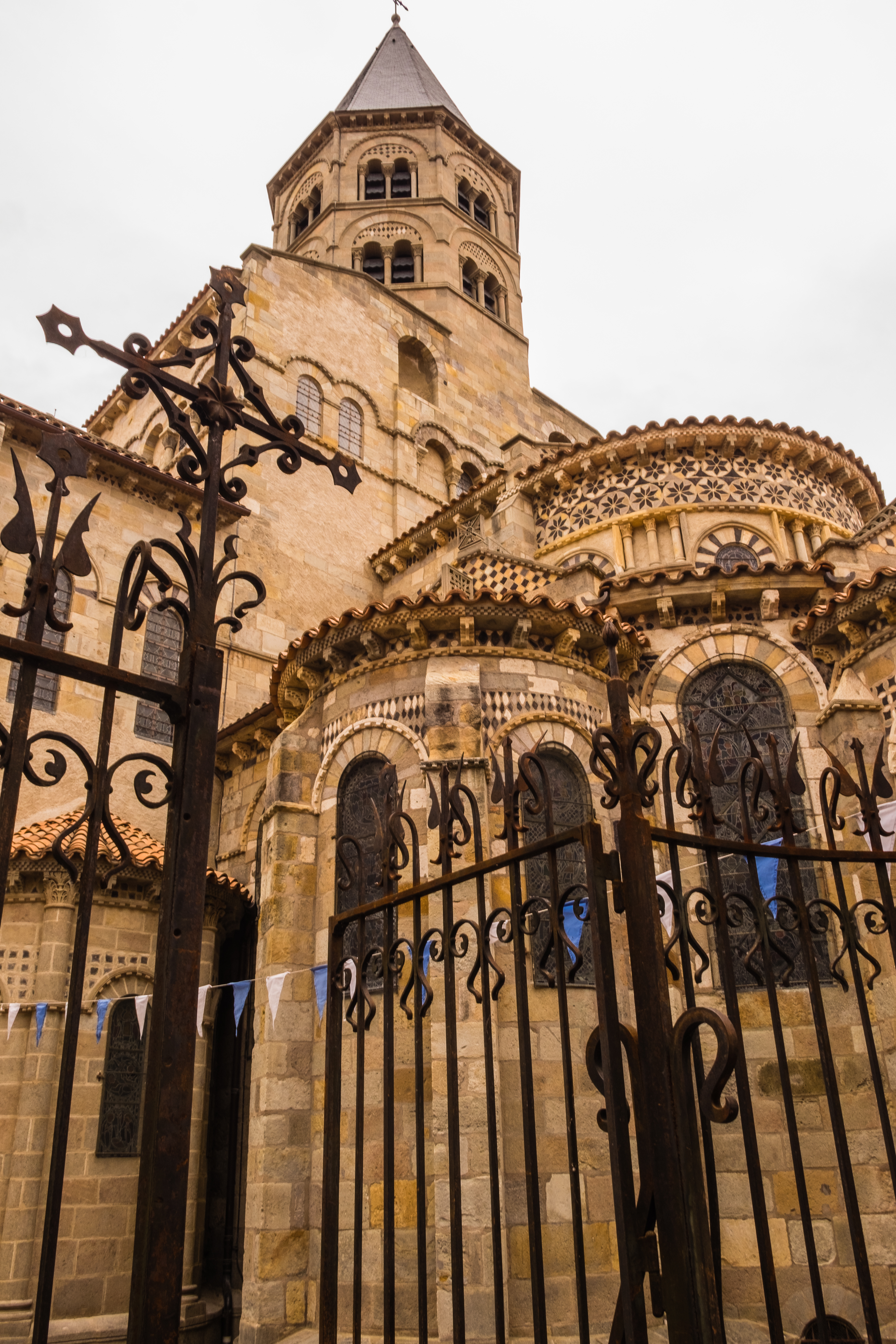
has "only" been there since 1248.) I’m not Catholic, but I love this building for the same reason it has appealed aesthetically to people for 800 years: it’s an extraordinary example of the Romanesque style marked by rounded arches laid out in perfectly proportioned rows, massively thick sandstone walls, and elaborate sculptures on the capitals at the top of the columns.
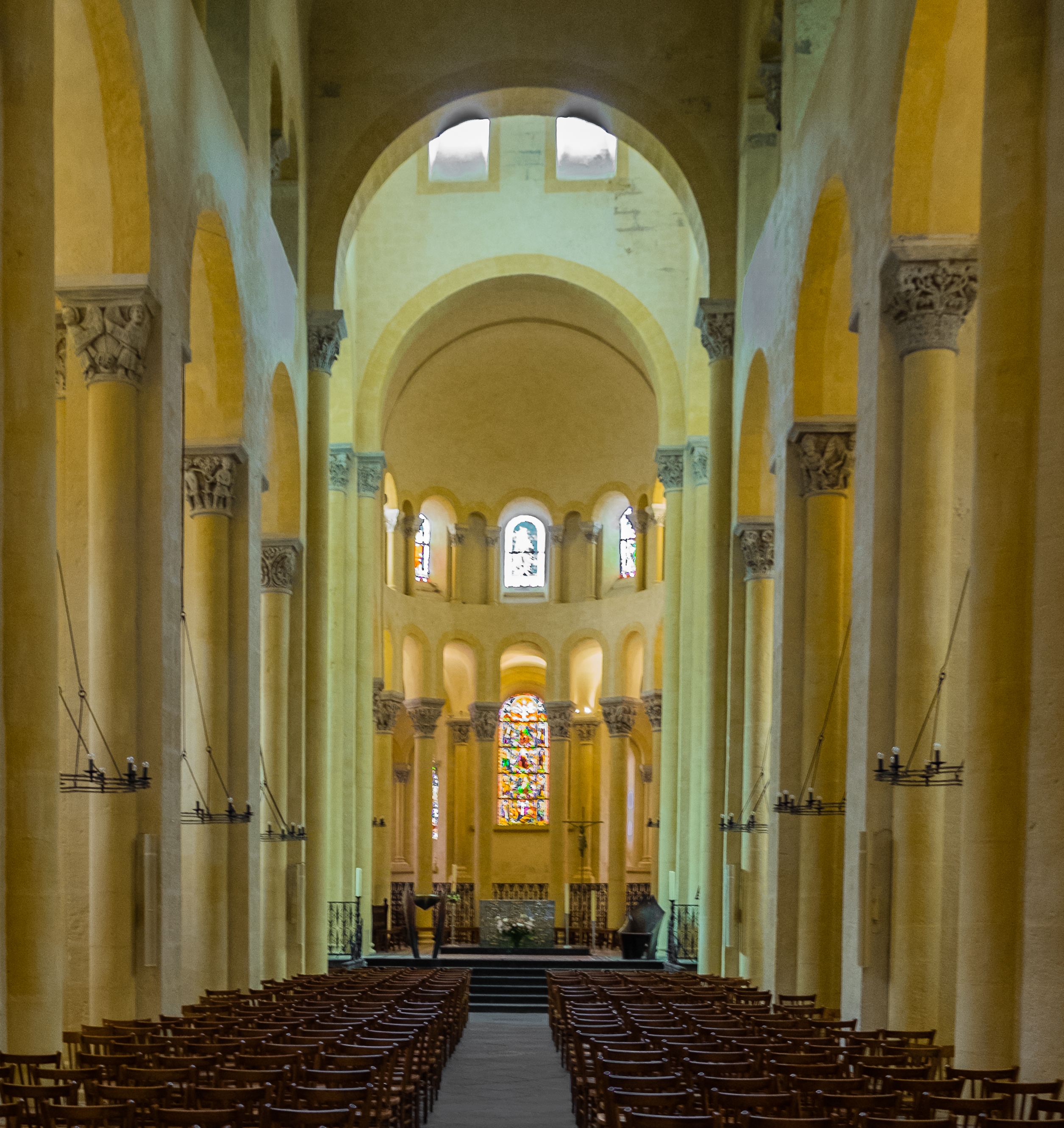
The interior has been repainted n a light yellow wash. This gives it a much brighter aspect, although I personally preferred the dark stone in its pre-restoration state because it made the place seem more authentically ‘medieval’ to me.
Some of the brightly-painted chapels that are also characteristic of Romanesque churches remain as they were before, and the rich stained glass casts abstract patterns on the stone floors.
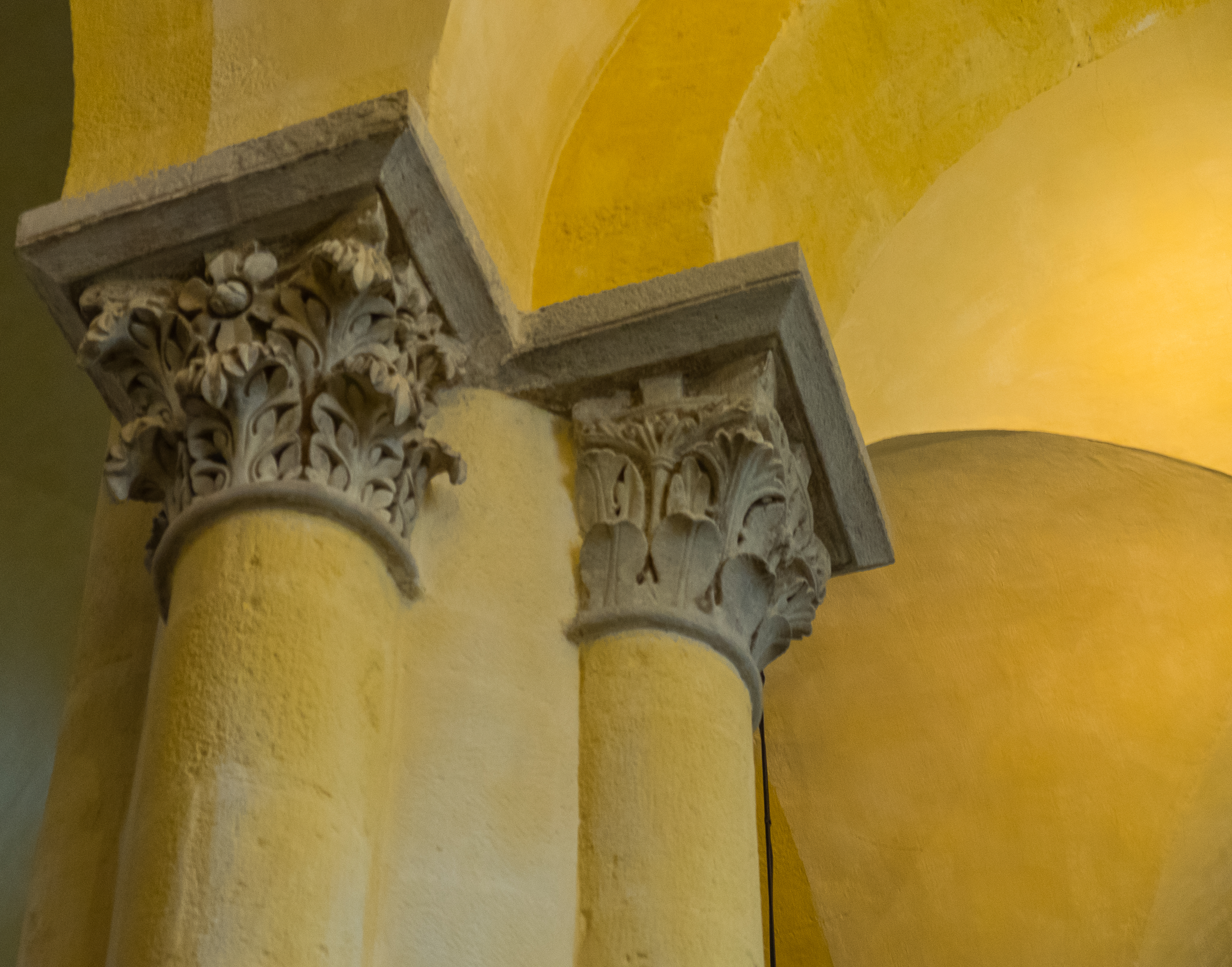
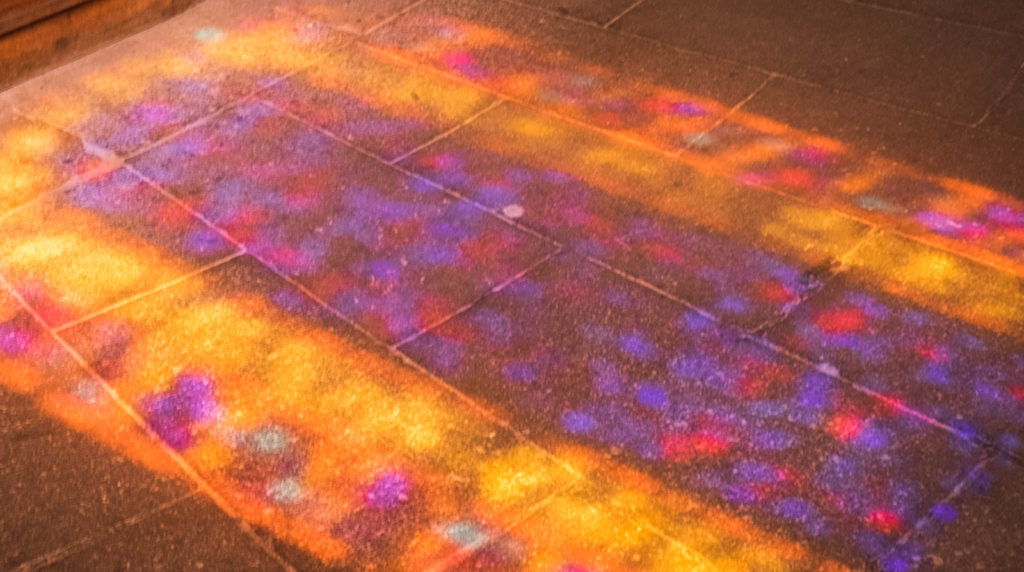
When I’m here I like to imagine people coming here every Sunday for centuries. What was life like for them during the week? What preoccupied them when they came through these doors? Were they celebrating a good harvest, or had an entire crop for the season been destroyed by a hail storm? Were they grieving for a son killed when the Vikings (or the English or the Germans) came? Where they worried that another earthquake like the one that struck in 1490 would bring the church's roof crashing down? Were they searching for meaning in the midst of news from Verdun? Were they hungry or well-fed, happy or frightened, worn down by life or ready to go on the attack?
It’s called Notre Dame du Port because it was in the center of a thriving market just on the edge of the city – what were they selling in the narrow streets around the basilica? What noises would you have heard through these thick walls? What smells would have assaulted your nose? Pilgrims stopped here, a formal way-station on their way to St John of Compostela in Spain. What were they thinking at this point in their long journey? Did any of them turn back? Or were they inspired by the church’s famous “Black Virgin” statue to carry on?
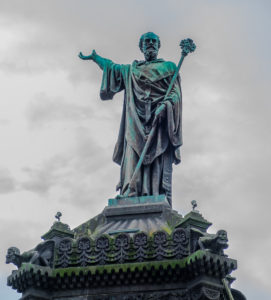
One particular event, though, happened in this church that permeates today's headlines and echoes in our national dialogue almost every day of the week right now. In 1095, Pope Urban II convened his “Council of Clermont” here. For ten days in November, the elders of the church worked on a broad agenda, approving a list of reforms for monastic orders and excommunicating King Philip I for his adulterous marriage.
The Pope had something bigger on his mind, though: he had been asked by the Byzantine emperor for help in the face of advancing Turkish Muslim forces, and Urban II saw an opportunity to disrupt the constant internecine warfare that plagued Europe by redirecting the attention and resources of his knights toward the Middle East. So on the ninth day of this “Council of Clermont”, he marched out of the church down the Rue du Port into the field at the edge of town. (It’s possible this is modern-day Place Delile, a fairly ordinary little concrete square surrounded by banks, bus stops, and the Best Western Hotel des Puys).
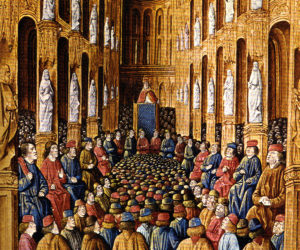
It must have been an incredibly rousing sermon. Several versions survive, although some are from fairly dodgy sources. In any event, the Pope’s message went something like this: the knights of Europe must go to the Middle East and drive the Muslim population out. “I, or rather the Lord, beseech you as Christ's heralds,”
he said, “to publish this everywhere and to persuade all people of whatever rank, foot-soldiers and knights, poor and rich, to carry aid promptly to those Christians and to destroy that vile race from the lands of our friends… Christ commands it. All who die by the way, whether by land or by sea, or in battle against the pagans, shall have immediate remission of sins.”
On my way back to the office after a cooling lunch hour in the basilica, I like to walk down the two blocks of this narrow cobbled street to Place Delille, trying to imagine the great knights of France assembled for this speech. “Deus lo volt!”, thundered the Pope, “God wills it!” and hundreds of them stepped forward to “take the Cross”, pinning the emblem on their coats and revving themselves up for what became the First Crusade. I’ve read a lot, both history and fiction, about these wars and the unimaginable suffering they brought to both Muslims and Christians for the next 350 years – and I think about where those conflicts have taken us since, right down to the latest acts of terrorism by ISIL and the bizarre rhetoric that infects our current Presidential campaign in the U.S.A.
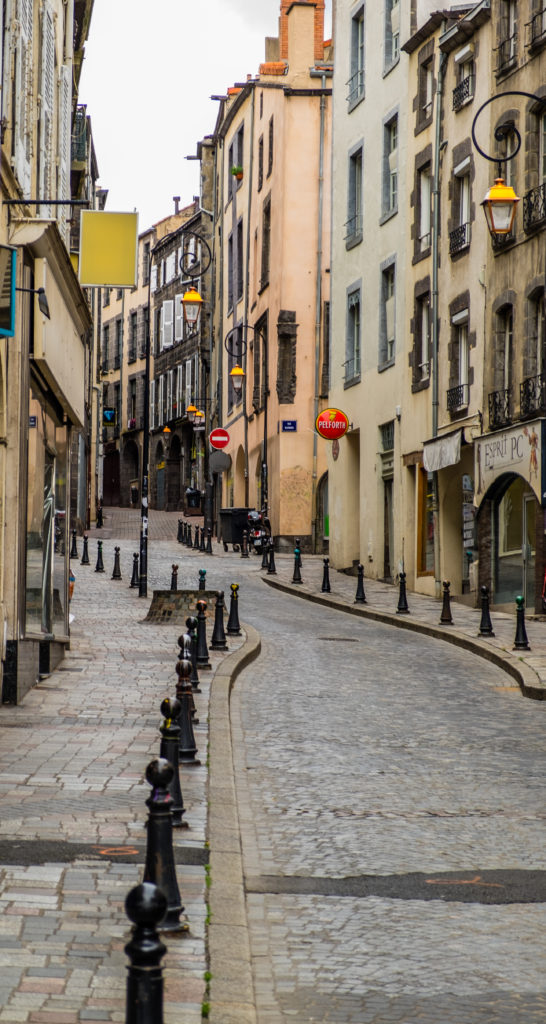
This small, ancient, utterly beautiful building is now a UNESCO World Heritage Site. There are other extraordinary Romanesque churches, many in tiny villages scattered around the deep heart of France. But this one is special to me.
Go in the summer (if you can) to escape the heat. Reflect on the logistical challenges involved in bringing these massive blocks of limestone from a quarry twenty miles away and shaping them into something so elegant and perfectly proportioned. But take a moment, too, to think about what this place has seen over 830 years – and about the link it has to our daily life right now.
Do you know someplace in France that has had a personal impact like this for you? Please tell us where it is and how you feel about it!

